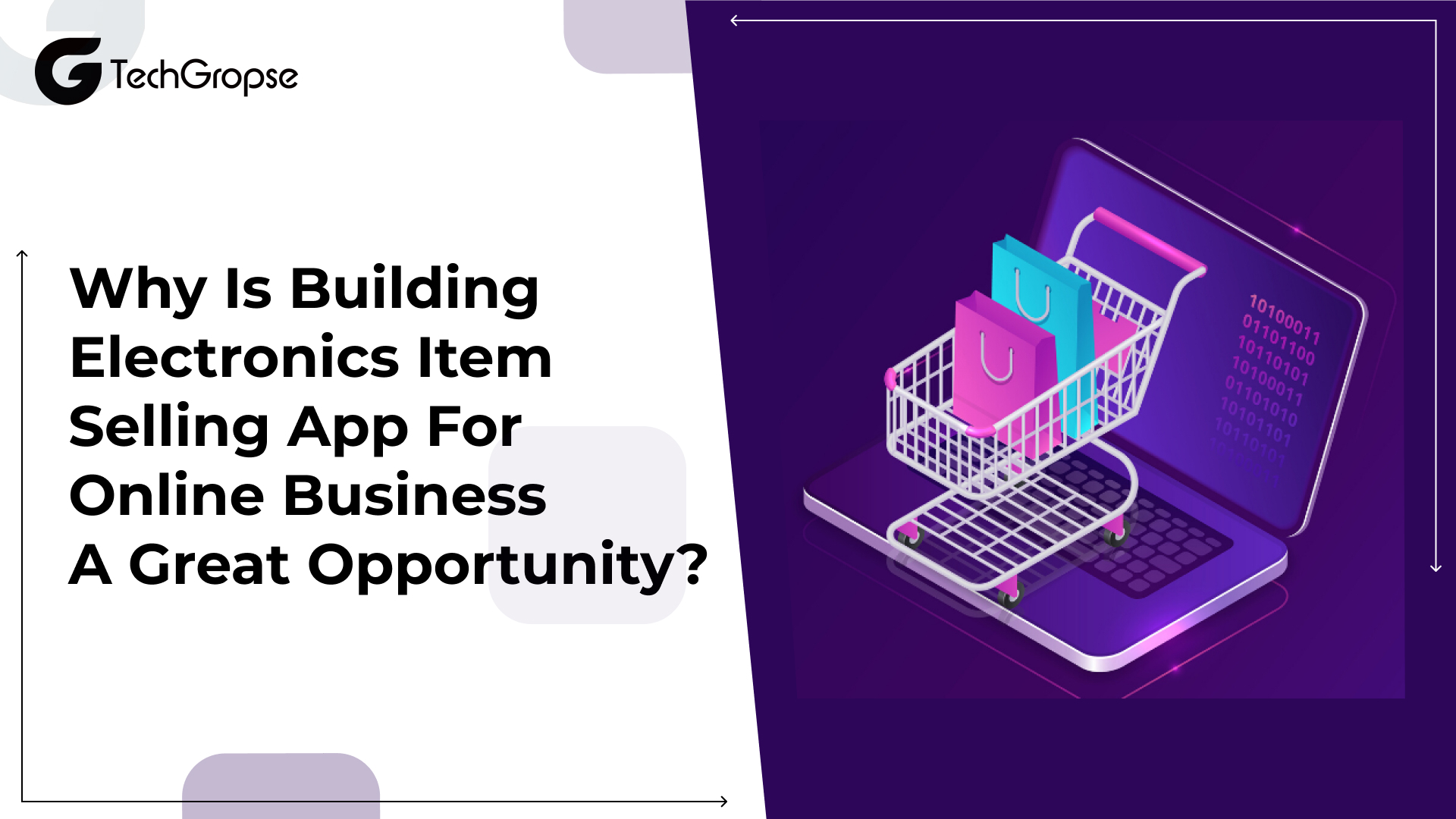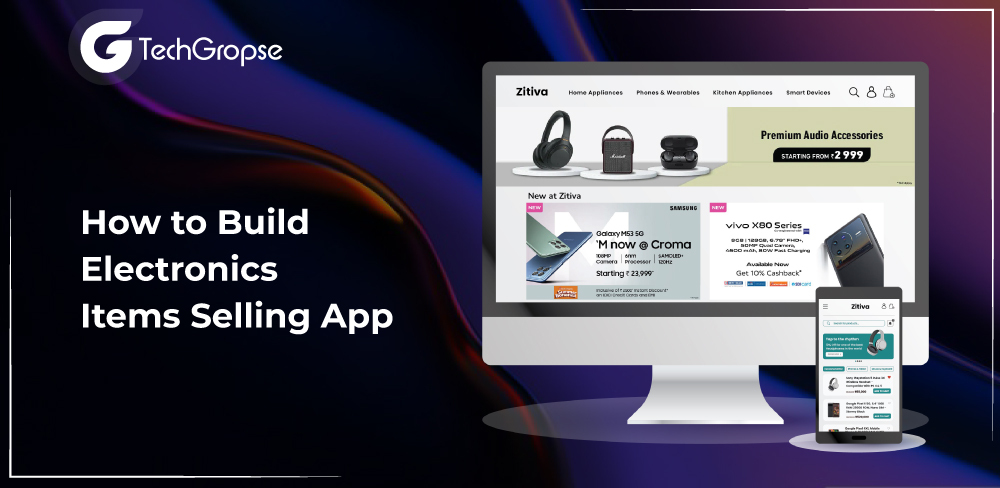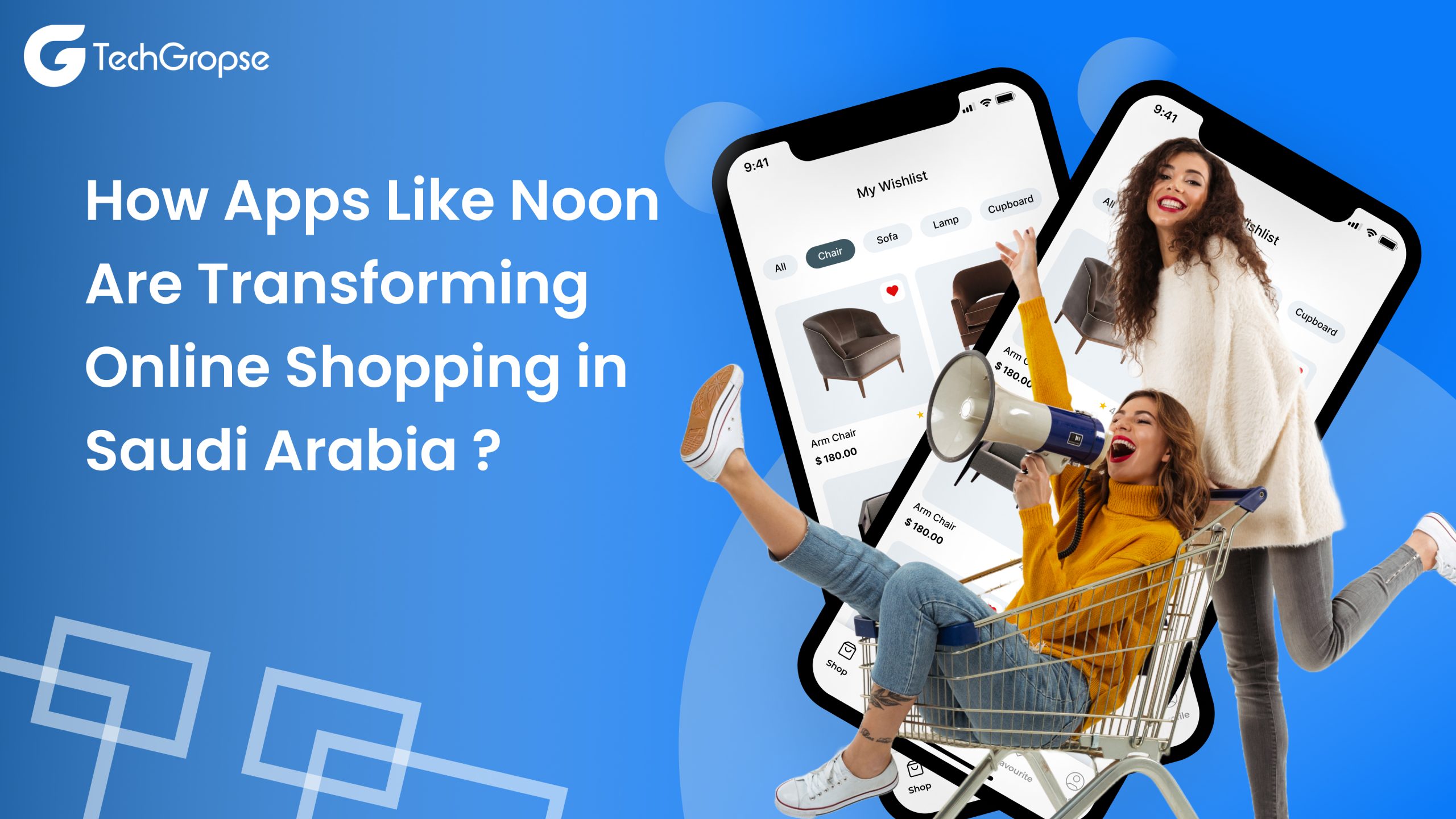Are you ready to jump into a world of advanced technology and unbeatable deals? Whether you are a gadget guru or just looking to build electronics items selling app to upgrade your tech game, you are in the right place.
Picture this: browsing through sleek smartphones, powerful laptops, and home gadgets, all at your fingertips. With our user-friendly interface, finding the perfect device is easier than ever.
Say goodbye to endless scrolling and hello to hassle-free shopping with electronics items selling app.
But wait, there is more!
It is not just about gadgets; it is about making your life easier and more exciting. From lightning-fast delivery to top-notch customer support, we have got you covered every step of the way.
So, what are you waiting for? Join the electronics revolution today and experience the thrill of tech shopping like never before.
Let’s make your gadget dreams a reality!
The Numbers Game: Analyzing Trends in the Electronics Items Selling App Market
Here are some key insights to get you plugged into the excitement:
- Big Bucks in Electronics: In 2024, the global consumer electronics market raked in a whopping US$1,046.0 billion.
- Telephony Takes the Lead: Among all the cool gadgets out there, telephony steals the spotlight with a market volume of US$486.7 billion in 2024.
- China Leads the Charge: When it comes to cashing in on gadgets, China leads the pack, bringing in a jaw-dropping US$218.6 billion in 2024.
- Every Penny Count: By 2024, the global consumer electronics market will receive approximately US$135 per person.
- Online Shopping on the Rise: By 2024, online sales are expected to account for a third of the total revenue in this market.
- Volume Boom Ahead: By 2028, the consumer electronics market is set to hit a whopping 9,014.0 million pieces.
- Smart Homes, Smart Demand: In the United States, smart home devices are all the rage, dominating the consumer electronics scene.
- Growth on the Horizon: Expected volume growth of 1.6% in 2025. The tech world is always evolving, and so are your gadgets!
Looking to Sell Electronics Items? Wondering How to Start an App?
Have you ever dreamed to build electronics items selling app? Whether you are a tech expert or a business mastermind, you can consult with a reputable electronics items selling app development company that follows simple steps.
Step 1: Define Your Niche and Audience
The electronics market is vast, encompassing everything from smartphones and laptops to cameras and appliances. When you start to build electronics items selling apps, choosing a niche within this sector helps you cater to a specific audience and stand out from the competition.
Here are some factors to consider:
- Product Category: Will you focus on smartphones, audio equipment, or a broader mix?
- Target Audience: Are you targeting casual users, experts, tech enthusiasts, or budget-conscious buyers?
- Condition: Will you specialize in new, refurbished, or used electronics?
Step 2: Research the Existing Landscape
Understanding your competition is crucial for success. Download and explore popular electronics-selling apps to see what features they offer.
Consider the following to build electronics items selling apps:
- User Interface (UI) and User Experience (UX): How easy is it to navigate the app and find specific products?
- Listing Process: How smooth and efficient is the process of listing items for sale?
- Search Functionality: Is searching intuitive, and does it allow for specific filters?
- Security & Payment Gateways: How does the app ensure secure transactions?
By understanding existing apps, hire dedicated developers who identify their strengths and weaknesses, allowing you to create a product that fills gaps in the market.
Step 3: Plan Your App’s Features
Once you have defined your niche and analyzed the competition, it’s time to map out the core functionalities of your app.
Here are some essential features to consider when you start to build electronics items selling apps:
- User Registration and Login: Allow users to create accounts for buying, selling, and managing transactions.
- Product Listing: Create an intuitive interface for sellers to upload pictures, descriptions, specifications, and pricing information.
- Search and Filter: Implement a robust search function with filters by category, brand, price, condition, and other relevant factors.
- Messaging System: Facilitate secure communication between buyers and sellers for inquiries and negotiations.
- Payment Processing: Integrate secure payment gateways for safe and seamless transactions.
- Review System: Allow users to leave reviews for sellers, building trust and credibility.
- Shipping Integration: Offer shipping options or integrate with logistics providers to simplify delivery.
- Notifications System: Notify users about messages, purchase confirmations, and other relevant actions.
Step 4: Choose Your Development Approach
Turning your vision into reality involves coding the app. Hire mobile app developers who follow different development approaches:
- Build from Scratch: This offers the most control over customization but requires a strong coding team and significant resources.
- Low-Code/No-Code App Builders: These platforms offer pre-built functionalities and drag-and-drop interfaces, making development faster and potentially cheaper, but with limitations on customization.
- Hire a Development Team: This option offers expert electronics items buying and selling app development services but can be costly depending on the features and complexity of your app.
Step 5: Design and User Interface
A user-friendly and visually appealing interface is critical for app success.
Here is what to consider to build electronics items selling apps:
- Simplicity and Clarity: Focus on clean lines, intuitive navigation, and easy-to-understand menus.
- High-Quality Images: Encourage sellers to upload clear and detailed pictures of their products.
- Search Optimization: Design the search function to be efficient and yield accurate results.
Step 6: Testing and Bug Fixing
Before launching your app, thorough testing is essential. Connect with an Android app development company to test the app’s functionality, identify bugs, and ensure a smooth user experience.
Thoroughly test your app across various devices, screen sizes, and operating systems to identify and fix any bugs or issues.
Hire Android app developers who perform usability testing with real users to gather feedback on the app’s performance, usability, and overall experience.
Use analytics tools to retention, track user engagement, and conversion rates, and iterate based on insights to optimize the app for success.
Step 7: App Store Submission and Marketing
Once your app is completed, it is time to submit it to the relevant app stores (Apple App Store and Google Play Store). It involves creating app store listings, including descriptions, screenshots, and relevant keywords.
Marketing your app is crucial for user acquisition. Here are some strategies to consider:
- Social Media Marketing: Promote your app across popular social media platforms.
- Content Marketing: Consider a mobile app development company to create informative blog posts and articles about your app and the electronics selling market.
- App Store Optimization (ASO): Optimize your app store listing to improve discoverability through
Why Is Building Electronics Item Selling App For Online Business A Great Opportunity?

If you are an entrepreneur and trying to build electronics items selling apps that can be a game changer. It is a fantastic opportunity to turn your idea into a profitable online business:
1. A Booming Market
The electronics resale market is massive and constantly growing. People are increasingly looking for ways to offload unused gadgets and find great deals on pre-owned tech. Your app can tap into this exciting demand and connect a network of eager buyers and sellers.
2. Convenience is King
In this competitive world, convenience and time are king. Your app offers a seamless platform for users to sell their electronics from the comfort of their couch and for buyers to find the perfect tech treasure with just a few taps.
3. Reduced Overhead Costs
Compared to a brick-and-mortar store, an app requires minimal overhead mobile app development costs. You eliminate the need for physical space, inventory management, and a large sales staff. It translates to higher profit margins and a faster path to profitability.
4. Scalability and Growth
The beauty of an app lies in its scalability. As your user base grows, your app can easily accommodate the increased traffic without significant additional investment. It allows you to reach a wider audience and expand your business rapidly.
5. Building a Community
Your app can foster a vibrant community of tech enthusiasts and bargain hunters. User reviews and ratings promote trust and transparency, while communication features can facilitate interaction between buyers and sellers. It fosters a loyal user base that keeps coming back for more.
6. Data-Driven Decisions
Mobile apps generate valuable data on user behavior and buying patterns. This data can be a goldmine of insights, helping you identify popular categories, user preferences, and pricing trends. You can leverage this information to optimize your app, curate product offerings, and personalize the user experience for higher engagement and sales.
7. Competitive Advantage
Standing out in the crowded electronics market is crucial. A well-designed app with unique features, a user-friendly interface, and secure payment processing can give you a competitive edge.
8. Endless Innovation
The app development world is constantly evolving. You can keep your app fresh and exciting by integrating new features like augmented reality for product visualization or AI-powered recommendation engines for personalized product suggestions.
9. Multiple Revenue Streams
Beyond transaction fees, you can explore additional revenue streams. Partner with tech repair services to offer value-added options or integrate advertising from electronics brands to expand your reach and generate income.
How Much Does it Cost to Build Electronics Items Selling App?
As we discussed above, Building an electronics-selling app is not just about creating a platform; it is about creating a smooth and enjoyable experience.
With a clear vision, a user-centric approach, and continuous improvement, your app has the potential to become a major player in the ever-growing electronics resale market.
So, are you ready to power up your profits and change the way people buy and sell electronics?
| Expense | Cost Range (USD) |
| Development | $5,000 – $50,000 |
| Design (UI/UX) | $2,000 – $20,000 |
| Backend Infrastructure | $2,000 – $10,000 |
| Hosting & Server Costs | $500 – $5,000 per year |
| Testing & Quality Assurance | $1,000 – $10,000 |
| Third-party Integrations | $500 – $5,000 per integration |
| Maintenance & Updates | $1,000 – $10,000 per month |
Note: Total cost to build electronics items selling apps can vary significantly based on factors. It includes the complexity of features, platform compatibility (iOS, Android, web), the size and experience of the on-demand app development company, and additional services required.
From Clicks to Cash: How Does an Electronics Items Selling App Make Money?

If you want to build electronics items selling apps, you should know how they make a profit. There are several business models that an electronics item selling app can utilize.
Here are the most common ones:
1. Retail Model (B2C)
- Concept: The app acts as a virtual store, buying electronics in bulk or directly from manufacturers and then selling them to individual consumers at a marked-up price. It is the most traditional e-commerce approach.
- Revenue Stream: Profits come from the difference between the buying and selling price (markup).
- Examples: Best Buy app, Samsung online store app.
2. Marketplace Model (B2B & C2C)
- Concept: The app acts as a platform connecting sellers (electronics brands, wholesalers, individual resellers) with buyers (consumers). The app takes a commission on each transaction.
- Revenue Stream: Commissions on sales, potentially with additional premium features for sellers (enhanced listings, priority placement).
- Examples: Amazon marketplace app, eBay app (for electronics)
3. Subscription Model
- Concept: The app offers a subscription service where users pay a monthly or annual fee for access to exclusive deals, discounts, early access to new products, or bundled services (e.g., free technical support, extended warranty).
- Revenue Stream: Recurring subscription fees.
- Examples: Some electronics manufacturers offer exclusive app subscriptions with early access to new releases or discounts on accessories.
4. Freemium Model
- Concept: The app offers basic functionalities like browsing products and comparing prices for free. Premium features like faster checkout, priority customer service, or exclusive content (e.g., in-depth product reviews) are available for a fee.
- Revenue Stream: The Freemium model relies on a smaller percentage of users converting to paid subscriptions.
- Examples: Some electronics retailers might offer a freemium app with basic features like browsing products, while premium features like faster delivery or exclusive discounts require a subscription.
5. Hybrid Model
- Concept: The app combines elements of different models. For instance, it might sell electronics directly (retail model) while also offering a marketplace platform for other sellers (marketplace model).
- Revenue Stream: A combination of revenue streams from the chosen models (e.g., markup on direct sales, commissions on marketplace transactions).
- Examples: Many large electronics retailers employ a hybrid model with their apps.
The best business model for an electronics selling app depends on various factors, including target audience, product range, and competitive landscape.
It’s crucial to consider the electronics items buying and selling app development company, operational costs, and the value proposition the app offers to both sellers and consumers.
List of Top Electronics Items Selling App
| App Name | Description |
| Amazon | One of the largest online marketplaces for electronics and various other products. Offers multiple products at a cost-effective price. |
| eBay | A popular platform for buying and selling both new and used electronics. Users can bid on items or purchase them at a fixed price. |
| Best Buy | A leading retailer offering a multiple selection of electronics, including computers, smartphones, TVs, and appliances. The app provides easy access to product information and reviews. |
| Newegg | Specializes in electronics and offers multiple products, including components, peripherals, and gadgets. Known for competitive prices and excellent customer service. |
| Walmart | Offers a diverse range of electronics products, including smartphones, laptops, TVs, and accessories. Provides easy shopping options such as in-store pickup and delivery. |
| Flipkart | One of India’s largest e-commerce platforms, offering a wide selection of electronics products at competitive prices. Known for its user-friendly interface and fast delivery. |
| AliExpress | A global marketplace that offers a vast selection of electronics items at discounted prices. Features products from sellers worldwide and offers buyer protection. |
| Gearbest | Specializes in consumer electronics and gadgets, offering a wide range of products at competitive prices. Provides international shipping and various payment options. |
| Banggood | Offers a diverse range of electronics products, including smartphones, tablets, drones, and accessories. Known for frequent discounts and deals. |
| Target | A retail giant offering a variety of electronics items, including TVs, computers, gaming consoles, and smart home devices. Provides convenient shopping options, including curbside pickup and same-day delivery. |
Conclusion
Developing an electronics items selling app can be a game changer where businesses interact with customers and conduct transactions in the digital landscape.
Ecommerce app development company prioritizing user experience, security measures, and strategic marketing initiatives, businesses can elevate their online presence and drive sales growth.
As technology continues to grow, staying ahead of the curve with a well-crafted app can position businesses for long-term success in the competitive electronics market.
Embrace the opportunities that a dedicated app can offer, and embark on a journey towards enhanced customer satisfaction and business expansion.
FAQ: How to Build Electronics Items Selling App
1. Why is market research important to build electronics item selling app?
Market research helps businesses understand their target audience, identify market trends, and make informed decisions about app features and marketing strategies.
2. How can businesses ensure the security of payment transactions on their app?
Businesses can implement secure payment gateways, adhere to industry standards for data encryption, and regularly update security protocols to safeguard payment transactions.
3. What are the key metrics to monitor app performance?
Key metrics to monitor app performance include user engagement, conversion rates, app downloads, retention rates, and customer feedback. Analyzing these metrics helps businesses make data-driven decisions for app optimization.
4. How can businesses effectively promote their electronics selling app?
Businesses can promote their app through digital marketing strategies, social media campaigns, influencer partnerships, email marketing, and app store optimization to increase visibility and attract potential customers.

Hello All,
Aman Mishra has years of experience in the IT industry. His passion for helping people in all aspects of mobile app development. Therefore, He write several blogs that help the readers to get the appropriate information about mobile app development trends, technology, and many other aspects.In addition to providing mobile app development services in USA, he also provides maintenance & support services for businesses of all sizes. He tried to solve all their readers’ queries and ensure that the given information would be helpful for them.











